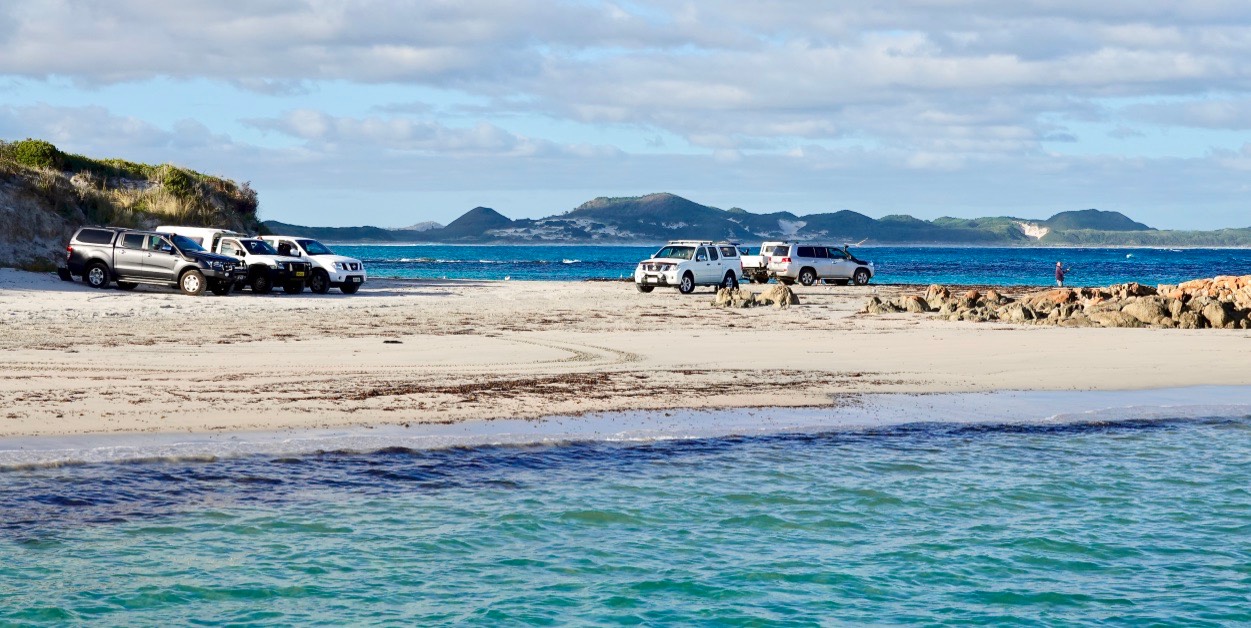
Peaceful Bay
We made our way to Albany passing flocks of ringneck parrots, galahs and a few more painted silos. We stopped at the “Happy Days” Caravan Park just north of Albany right next to the King River.
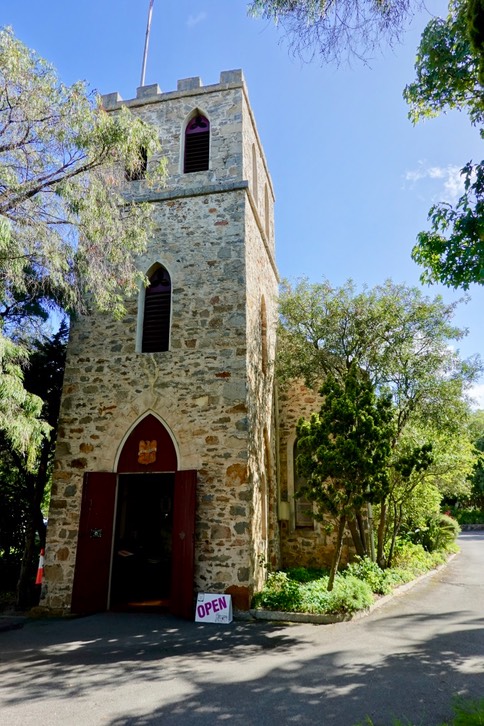
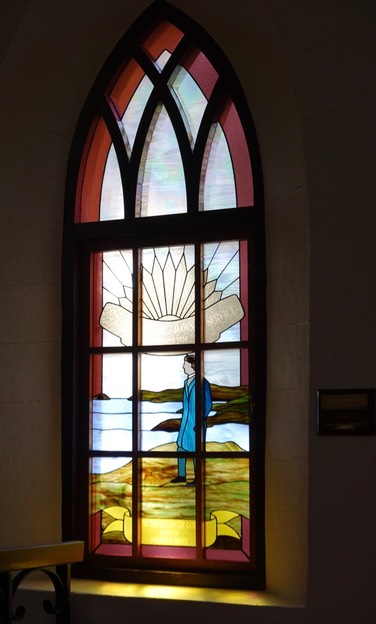
Driving into the city we were amazed how much it had grown since we were last here in 1979. Yet the town of 35000 inhabitants still maintains its relaxed harbour-side character and prides itself on not having a single traffic light!
We were drawn to a small stone church, the oldest in WA as we learned. A knowledgable parish volunteer pointed out a window featuring the late Padre White, who accompanied Australian troops to Galipoli during WWI. He was later wounded and returned to his home town. On 25th April 1930 he held the first ANZAC Day Dawn Service on Australian soil here, in this small church in Albany.
The main attraction for many Australians is Albany’s meticulously landscaped ANZAC Peace Park and the National ANZAC Centre highlighting Albanys role in the first world war. 41000 Australian and New Zealand troops were shipped from Albany’s harbour via Egypt to Turkey.
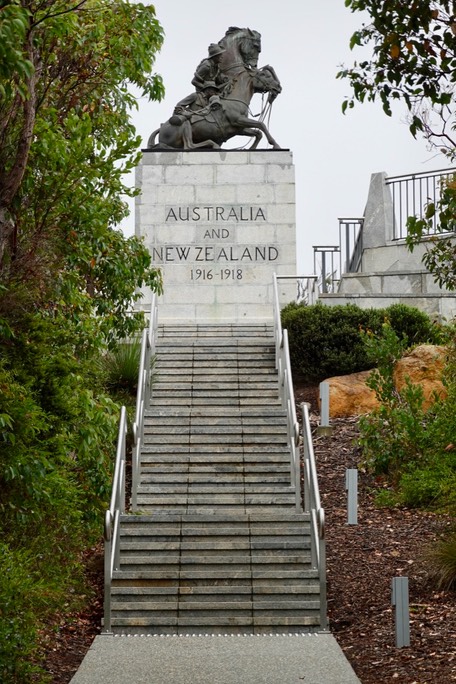 For so many it would be the last place they saw of their home country. Along the Peace Parks walkways and throughout the centre touching tributes in form of poems and excerpts of letters written by young soldiers or their families are edged into tall metal columns. At sunset the Avenue of Honour leading uphill to the ANZAC memorial is illuminated by the “Field of Lights”. Although a smaller version of the Bruce Munro display erected at Uluru, the 1600 light spheres in green, white and yellow add a special poignancy to this location.
For so many it would be the last place they saw of their home country. Along the Peace Parks walkways and throughout the centre touching tributes in form of poems and excerpts of letters written by young soldiers or their families are edged into tall metal columns. At sunset the Avenue of Honour leading uphill to the ANZAC memorial is illuminated by the “Field of Lights”. Although a smaller version of the Bruce Munro display erected at Uluru, the 1600 light spheres in green, white and yellow add a special poignancy to this location.
Unfortunately the weather was very unpredictable changing within minutes from warm sunshine to strong, cold winds and sudden showers.
After moving from the European to the Australian summer for the past 7 years, Austin and I have become a little precious with temperatures below 17 degrees. However, on our first day in Albany it was just nice enough to drive out to the "Natural Bridge” and watch in awe the power of the Southern Ocean from the height of a 40 metres steel cantilever suspended over the so-called Gap. I’ll never know how people come up with the courage to cross these waters in a small sailing boat, like our friends Vicky and Andrew!
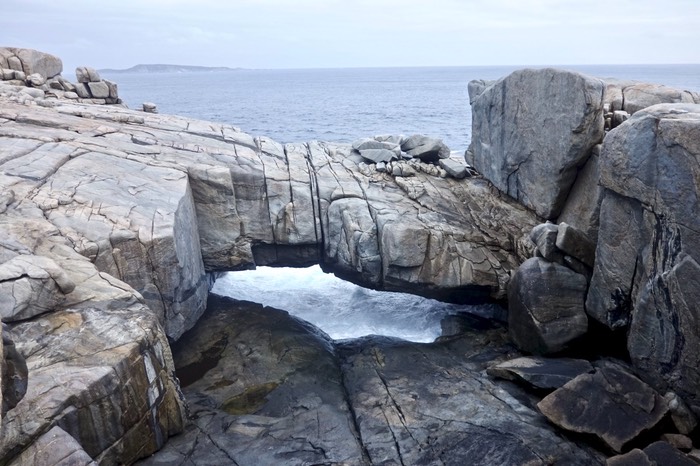
Not far from the Gap is the old Whaling Station. It was the last Australian whaling station to close down and was in operation from 1932 to 1978. It owed its longevity to its close proximity to the continental shelf, the hunting ground for sperm whales.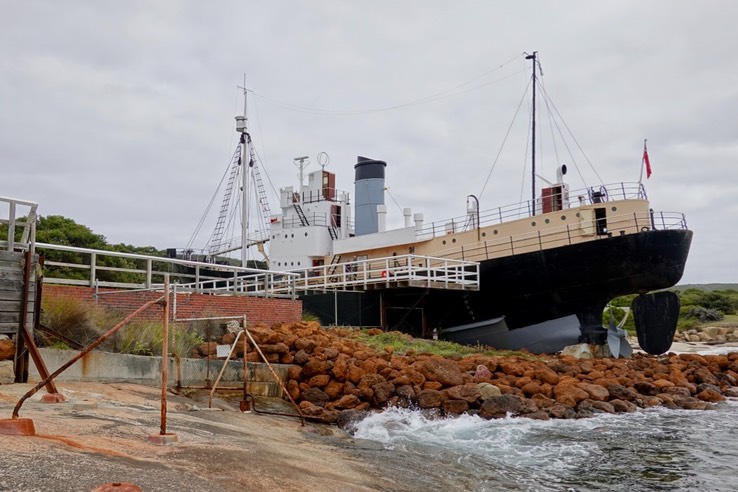 The sperm whales at the time were not as endangered as the humpback whales whose hunting was prohibited in Australian waters in 1963. The tour of the station opens one’s eyes to the cruelty of whaling - for the whales of course, but also for the whalers themselves. They often hated their job and the fact that, once they were located by a spotter plane, the whales didn’t have a chance.
The sperm whales at the time were not as endangered as the humpback whales whose hunting was prohibited in Australian waters in 1963. The tour of the station opens one’s eyes to the cruelty of whaling - for the whales of course, but also for the whalers themselves. They often hated their job and the fact that, once they were located by a spotter plane, the whales didn’t have a chance.
Attracted by the blood, the whale boats were often encircled by sharks, and even at the station sharks were luring and latching on to the whales as they were winched onto the flensing deck.
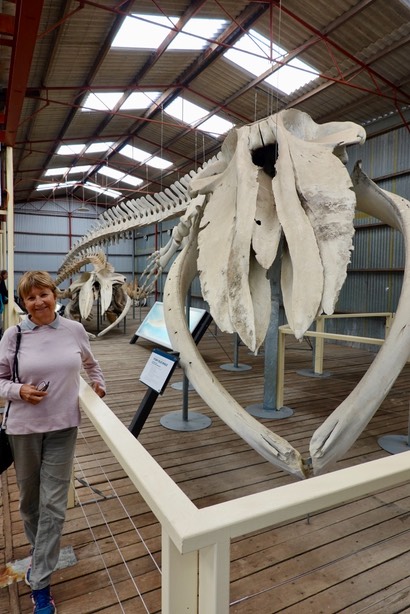
The worst of all jobs was probably the work on the flensing decks where the blubber was cut and the rest of the whale sawed into small pieces. From the blubber of one single whale 6000 litres of oil was extracted. This was used as lamp oil, in paints, cosmetics, machine oil and margarine while the by products were turned into fertilisers and stock feed.
Next to me is the skeleton of a “small” sperm whale - only 30 m long.
Thank God, these gentle giants of the sea are now protracted in our waters!
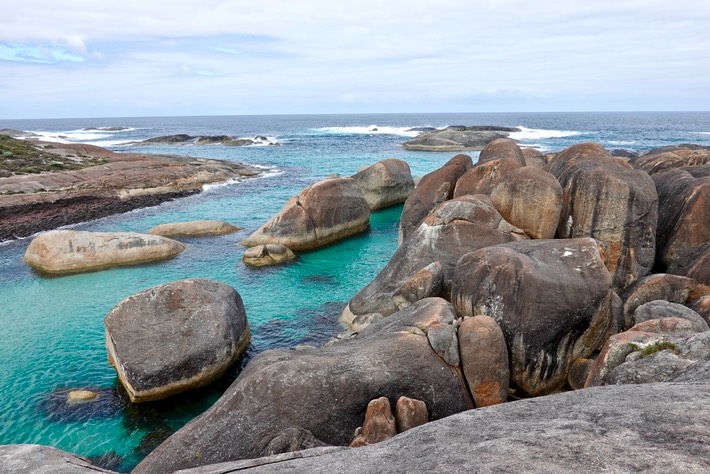
From giant mammals we headed towards "The Valley of the Giants" which stretches from Denmark to Walpole and covers an area of 6000 hectare.
But first we side tracked to some other beautiful bays: one named “Green Pools” and the other one’s claim to fame are the “Elephant Rocks”. Can you see why?
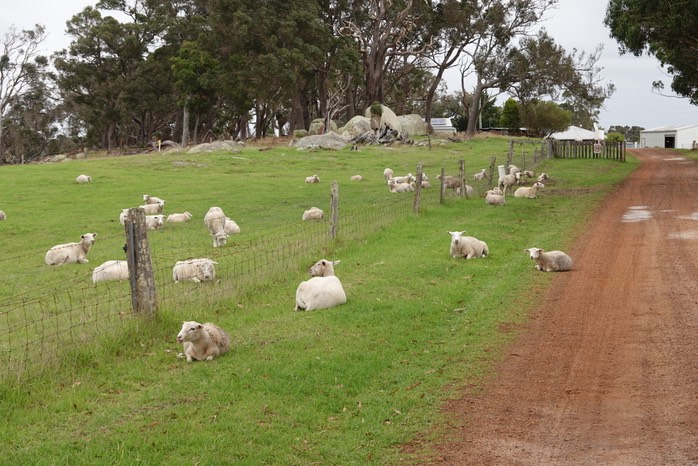
As it was getting late when we arrived at the Ayr Sailean Farm, our next campsite, we decided to save the Valley of the Giants 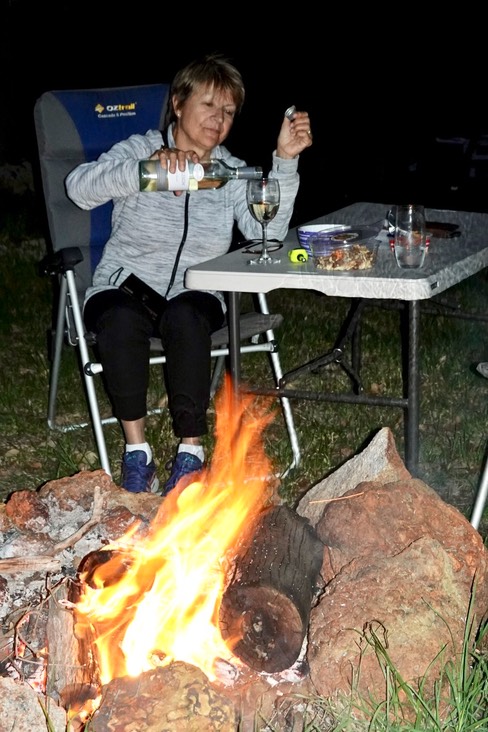 for the next day. The farm stay was again a recommendation from Austin’s sister, Penny, and we loved it! Large green, grassy areas are set up for caravans and campers among peacefully grazing sheep and alpacas. Spacey corrugated iron buildings serve as camp kitchen and bathrooms. As the sun set we made use of the fire pit next to our camp site and sat outside- having a drink or two- chatting until the last log was burned down.
for the next day. The farm stay was again a recommendation from Austin’s sister, Penny, and we loved it! Large green, grassy areas are set up for caravans and campers among peacefully grazing sheep and alpacas. Spacey corrugated iron buildings serve as camp kitchen and bathrooms. As the sun set we made use of the fire pit next to our camp site and sat outside- having a drink or two- chatting until the last log was burned down.
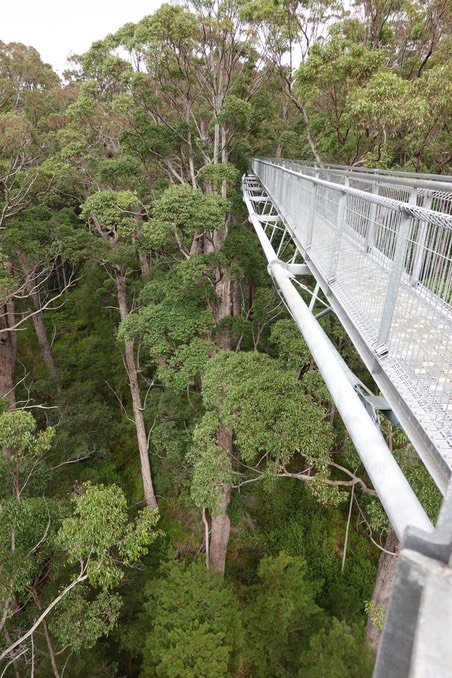
After an off road drive to Peaceful Bay and almost getting bogged exploring a sandy 4WD bush track, we entered the "Valley of the Giants". Just driving through the tall forest of beautiful eucalypts made me happy! Unfortunately the Red Tingles were way too big to be hugged! As they age, like it happens to us humans, they “bottom out”. Their bases can reach a circumference of 20 metres while the canopies tower 30 - 75 metres above.
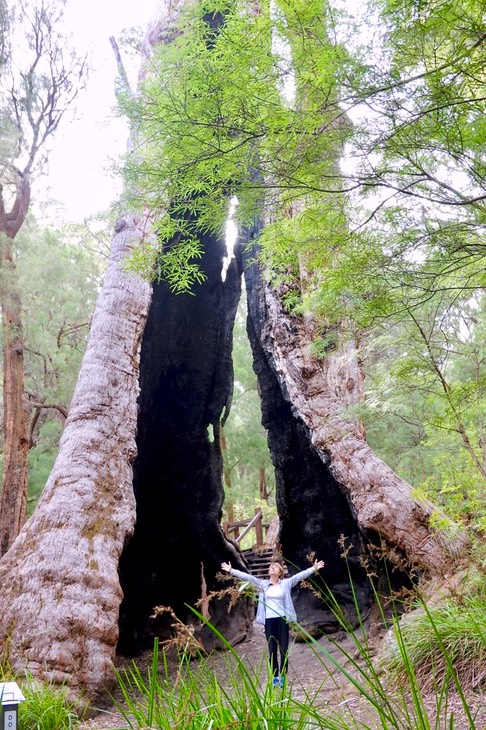
Looking down from 40 metres, the highest point of the tree top walk, the crowns of the trees still towering above, one feels a little acrophobic.
I much preferred walking along the forest paths and craning my neck to look up.
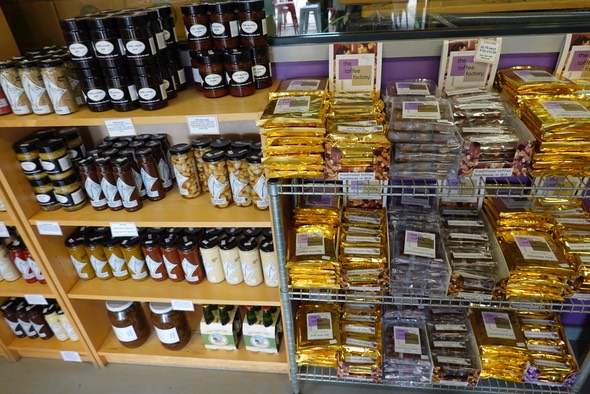
The Red Tingles are eucalypts with a very shallow root system. They gain their steadiness through the width of their bases acting like buttresses. They belong to the so-called "buttress eucalypts". Bush fires have hollowed some of the tree bases into large blackened caves. Only the dry, hard inside of the tree is consumed by fire while the moisture and nutrients absorbing outer layers preserve its life.
In order to keep ourselves nourished we called into the Toffee Factory on our way back. Apart from all kinds of toffee there were home made jams, relishes and ciders to choose from. Difficult choices, but we managed!